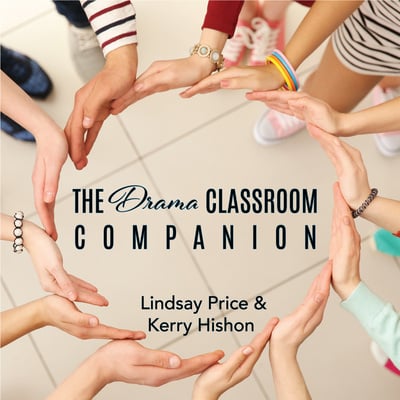Horror Movie 101: Failing Can Be Deadly by Steven Stack is a chilling mix of horror and humor - perfect for student performers and the spooky season! 👻
Encouraging Process over Product: The 90/10 Idea
Theatre is a funny thing, isn’t it? Teachers and students spend hours upon hours rehearsing, exploring, practicing, and reviewing. And that’s not even counting the hours spent working on the show outside of the drama room. Then, for about a week, the culmination of all that work is presented for audiences to experience. And then it’s over – with no real tangible result afterwards. Theatre leaves us with feelings, memories, and a shared experience, but without a physical product or item that you can hold in your hands.
Alongside the intangible results of doing theatre, students can overlook the importance of rehearsals. When spread out over a long period of time, rehearsals can blur together and become an abstract concept. You show up, rehearse, go home, and repeat. Students don’t always think about how much time is spent in rehearsals until it’s the week before show week and they’re shocked about how much time has passed and whether or not they actually feel ready to go on. They may feel bogged down or stressed out by the process while also being super-focused on the final product. So how can we help to alleviate this? Are our students really, truly aware of how much time is spent on rehearsing versus performing?
Let’s take a closer look.
Using your rehearsal schedule, count how many hours are spent rehearsing versus how many hours are spent performing. For example, in a show I recently directed, we rehearsed three times a week, for two and a half to three hours per rehearsal. Totaled up, we did about 112 hours of rehearsal over a four-month period. Then, count up the number of performances you have scheduled. We had six performances, each approximately two hours long, for a total of 12 hours in the theatre in front of an audience. The numbers don’t lie – you can see that approximately 90% of our time together was spent in rehearsal – versus 10% of our time actually performing in front of an audience. Most shows I have worked on follow a similar pattern.
Hence, the 90/10 idea. If 90% of the time is being spent in the rehearsal room, then let’s use that time in the best possible way! Work with your students to treat rehearsals as if they were performances. For example, how are students expected to behave during performance time? The emphasis is on focus, efficiency, being quiet backstage, and giving their best effort at all times. How wonderful and efficient would our rehearsals be if that happened each time everyone entered the drama room? There would be less need for constant repetition, more focus on “going deeper” with characters, and much less stress on everyone. By giving their full effort in rehearsal, students are better able to display their abilities, develop their endurance, and show their dedication to the show. By only giving a half effort, they are essentially holding themselves back from their true potential.
Sit down with your students and have them figure out the numbers. Let them see for themselves the amount of time that’s spent on rehearsing versus the amount of time that’s spent on performing. Discuss with them:
- What is the purpose of rehearsal? Why do we rehearse?
- If we spend 90% of our total theatre time rehearsing, how can we best use that time? How can we focus on both efficacy and fun?
- Why do you do theatre? Is it just to perform? Or is it for another reason?
That 90% of theatre time spent on rehearsing addresses so many student concerns:
- How can you grow and improve as a performer? Practice and review during rehearsals, which is entirely dedicated to helping students improve.
- How can you get off-book more quickly? Well, you’ll need to do some work by yourself, of course. But you know where else you can work on those lines… That’s right – at rehearsal.
- Do you truly love the thrill of performing? Rehearsals are the perfect place to perform on a frequent basis!
- Is the show honestly ready for an audience, right this minute? If not, we’d better get rehearsing.
Try using the 90/10 idea with your students to re-frame their mindset about rehearsals. Look at the numbers together as solid proof. Making the absolute most out of that majority of theatre time will result in the actual performances being that much better in the long run.
Related Articles
The Drama Classroom Companion
by Lindsay Price & Kerry Hishon
The Drama Classroom Companion is filled with articles and exercises to build the skills needed for theatrical performance as well as real world skills like creative thinking, critical thinking, collaboration, and communication.
The Rehearsal Companion
by Kerry Hishon
You’ve chosen the play, paid the royalties, done the script analysis, held your auditions, and cast the show. Tomorrow is the first rehearsal. Are you ready? Really ready? The Rehearsal Companion can help!





